News Archive
Gloria Dominguez Bello Coauthors Study on Urbanization and the Household Microbiome
By Pien Huang
November 14, 2019
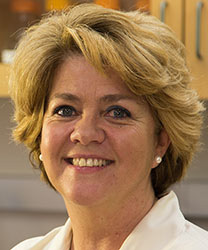
The researchers studied bacteria, fungi and microscopic life, including small parasites. These microbes live with humans — on and in our bodies, and in our homes and workspaces. While some cause problems for people, others, like the yeasts and molds that help make beer and cheese, are helpful.
To compare the diversity of microbes, they sampled from four locations in increasingly urban settings: from thatched huts in a rainforest community, to city apartments in the Amazonas state capital of Manaus. The researchers swabbed surfaces such as walls, floors and countertops in homes, and they took skin swabs from pets and people.
"We create the built environment with so many artificial materials," says Maria Gloria Dominguez-Bello, a professor of microbiology and health at Rutgers University and a co-author on the study. "We are living enclosed in houses with decreased bacterial diversity from the environment, and increasing the diversity of chemicals that we observe."
Some of the bacteria we're shutting out are probably helpful to humans, like good gut bacteria. The different chemicals and fungi were found not just in homes, she says, but on the skin of human bodies.
Read the full article at NPR
Debashish Bhattacharya Publishes on Red Algae Gene Loss
October 29, 2019
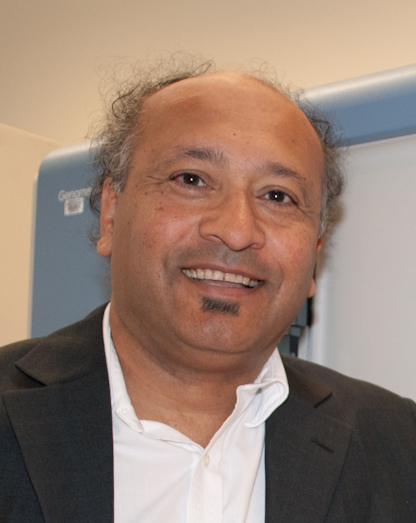
You'd think that losing 25 percent of your genes would be a big problem for survival. But not for red algae, including the seaweed used to wrap sushi.
An ancestor of red algae lost about a quarter of its genes roughly one billion years ago, but the algae still became dominant in near-shore coastal areas around the world, according to Rutgers University–New Brunswick Professor Debashish Bhattacharya, who co-authored a study in the journal Nature Communications.
The research may assist in the creation of genetically altered seaweeds that could be used as crops, help to predict the spread of seaweed pests and—as the climate warms and pollution possibly increases—control invasive seaweeds that blanket shorelines.
Scientists believe the 25 percent loss in genetic material resulted from adaptation by the red algal ancestor to an extreme environment, such as hot springs or a low-nutrient habitat. That's when the genome of these algae became smaller and more specialized. So, how did they manage to escape these challenging conditions to occupy so many different habitats?
"It is a story akin to Phoenix rising from the ashes, and the study answers an important question in evolution," said Bhattacharya, a distinguished professor in the Department of Biochemistry and Microbiology in the School of Environmental and Biological Sciences. "This lineage has an amazing evolutionary history and the algae now thrive in a much more diverse environment than hot springs."
Read the full press release at EurekAlert!
Read the journal article at Nature Communications
Celebration of the 75th Anniversary of the Discovery of Streptomycin
October 16, 2019
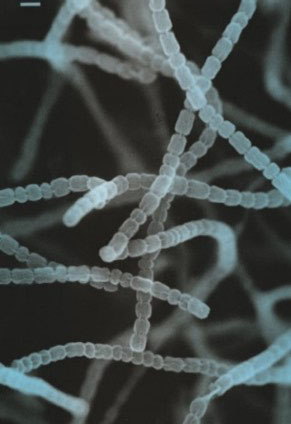
Streptomycin, produced by Streptomyces griseus, was discovered by Schatz, Bugie and Waksman (1944) in the Department of Soil Bacteriology (the first such department in the country, 1901) at the New Jersey Agricultural Experiment Station (today's School of Environmental and Biological Sciences), the culmination of a systematic search for antimicrobials from soil microbes and other sources developed by Waksman's group over several years. The successful Rutgers streptomycin discovery spurred efforts to find further broad-spectrum antibiotics and other microbial products and was a driving force in establishing New Jersey as a world center for the pharmaceutical industry. The discovery of streptomycin at the dawn of the antibiotic era, revolutionized the practice of medicine, disease control, and enhanced surgery. Internationally, it revolutionized the practice of public health including extending human life span. Confirmation of the momentous advance of the discovery of streptomycin was recognized through the award of the Nobel Prize in Physiology or Medicine, 1952 to Selman A. Waksman. Martin Hall (Cook Campus) one of the world's special scientific treasures is designated as an American Chemical Society Historic Landmark and a Milestones in Microbiology by the American Society for Microbiology. In 2019 Streptomyces griseus was honored as the official New Jersey State Microbe.
Martin Blaser and Gloria Dominguez Bello Investigate the Microbiome
By the SEBS Office of Communications
October 9, 2019

Each of us hosts a diverse ecology of microbes that have coevolved with our species, although they predate Homo sapiens by a mere 3.7 billion years. Responsible for carrying out many metabolic and protective functions, they take up residence in the mouth, digestive tract, ears, nasal passages, skin, and vagina. Acquired by age 3, such microbes have a big role in shoring up our immunity and allowing us to do battle with disease. Our microbiome keeps us healthy; parts of it, however, have gone missing. And there is an important culprit, in Blaser's view.
"When antibiotics were first discovered, they were so miraculous that people thought we could use them for everything," says Blaser, the author of the award-winning Missing Microbes: How the Overuse of Antibiotics Is Fueling Our Modern Plagues (Picador, 2015), which has been translated into 20 languages. "But nobody really considered what they may be doing to the microbiome. Now, it's clear that antibiotics do a lot. Nature has a design, and every time we interfere with it through medical intervention, there is a biological cost."
The biggest cost may occur during the formation of the microbiome, which takes place during a critical period—between birth and a child's third birthday, according to Maria Gloria Dominguez-Bello. She is a microbial ecologist who shares a research interest in the microbiome with Blaser, to whom she is married. They first collaborated more than 20 years ago when they investigated the ancestral roots of a bacterium known as Helicobacter pylori, a known cause of stomach ulcers. Dominguez-Bello is among the researchers who have demonstrated that children born by means of cesarean section are more susceptible to obesity, juvenile diabetes, and other chronic illnesses because they are not exposed to the beneficial bacteria lining the mother's birth canal
Read the full article at the SEBS/NJAES Newsroom
Ines Rauschenbach and Ramaydalis Keddis Go Digital in Class
September 27, 2019
LabArchives Blog

Working digitally has taken off in the education space. And in most spaces at this point. But what does a digital only learning environment actually provide? What's the real value of switching up age old paper tradition? Just talk to Ines Rauschenbach and Ramaydalis Keddis from Rutgers University who have been in the digital only game since before it was mainstream.
The two took their lab courses "digital only" with LabArchives five years ago. And after spending a half decade ahead of the curve here's what they have to say to anyone considering a move towards digital… "Just go for it and don't look back."
Ines coordinates introductory and applied microbiology while Ramaydalis coordinates general microbiology and is in charge of TAs, equipment and technology. Both teach morning to night most days and manage eight TAs.
They use LabArchives to achieve their digital only model in General Microbiology which has 200 students per semester in thirteen sections. They also use LabArchives in Introductory and Applied Microbiology courses. Sometimes the two team teach. But what prompted them to go digital in the first place?
The convenience factor seems like it would've been an obvious motivator for Ines and Ramaydalis who both wear multiple hats within their departments. But biosafety is what pushed them to go digital within their teaching lab environments. Little did they know, the switch would also bring massive benefits in terms of saving them time and increasing efficiency.
Read the full article at the LabArchives Blog
Debashish Bhattacharya Publishes Research on Red Algae
May 30, 2019
EurekAlert!

It's a case of grand larceny that could lead to new fuels and cleanup chemicals. Ten species of red algae stole about 1 percent of their genes from bacteria to cope with toxic metals and salt stress in hot springs, according to a study in the journal eLife.
These red algal species, known as Cyanidiales, also stole many genes that allow them to absorb and process different sources of carbon in the environment to provide additional sources of energy and supplement their photosynthetic lifestyle.
"The role of stolen genes in eukaryotes, which include most living things such as algae, has been hotly debated and many think it is unimportant and plays little to no role in their biology," said co-author Debashish Bhattacharya, a Distinguished Professor in the Department of Biochemistry and Microbiology at Rutgers University-New Brunswick. "Our robust genome data provide the first major evidence that this is a false narrative and that adaptation to a challenging environment can be directly facilitated by stolen genes."...
...The next steps are to build genetic tools to study the red algal species and conduct more lab tests to determine if they turn on bacterial genes, as expected, under stress. Julia Van Etten, a doctoral student in the Bhattacharya lab, recently received a three-year NASA award to conduct these studies with Cyanidiales.
Read the full article at the SEBS/NJAES Newsroom
Gloria Dominguez Bello Establishes Family Friendly Space on Cook Campus
May 30, 2019
SEBS-NJAES Newsroom

A significant advance has recently been made at Rutgers: a Family Friendly Space (FFS) to accommodate mothers having their babies onsite for nursing has opened at the Rutgers School of Environmental and Biological Sciences on the Cook campus in New Brunswick. The FFS serves as a free facility where lactating mothers can come to work or school, have their babies nearby, and use the space to nurse or pump. Located in the Food Science & Nutritional Sciences building in the space that formerly served as Dudley's Café, the facility includes a semi-private area for babies to sleep; a private area to nurse or express, a changing station with sink; a social area, and a work area with WiFi. Its function is not to serve as a daycare facility, but rather as a club for families with nursing babies to utilize the space and develop a social network. Lactating mothers will have access to the facility whenever they need it, making their own arrangements for the baby's care.
Henry Rutgers Professor of Microbiome and Health Maria Gloria Dominguez-Bello, from the departments of Biochemistry and Microbiology and Anthropology, established the FFS with the intent to not only empower young families, but to also serve as a venue for research on babies' health and development. Research will be conducted looking at differences in babies that are directly breastfed versus those fed bottled breast milk that has been expressed previously. "Nursing is more than just the milk," said Dominguez-Bello, "It's about bonding, the mothers and babies will be happier, and babies will be getting the correct milk at the right time with the fluctuations in hormones that are different in the morning than in the evening." The direct contact may contribute to the development of the baby's healthy microbiome which can be altered by stress generated from lack of maternal-baby lactation bonding.
Read the full article at the SEBS/NJAES Newsroom
Department Hosts Wageningen University Students at Symposium
July 18, 2019

On Thursday, June 13, 2019, The Deptartment of Biochemistry and Microbiology and the Graduate Program in Microbial Biology hosted students and faculty from Wageningen University (Netherlands) for a 1-day symposium. Distinguished Professor Gerben Zylstra, Program Director of Microbial Biology served as host at the event at which graduate students from Rutgers and Wageningen presented their research.
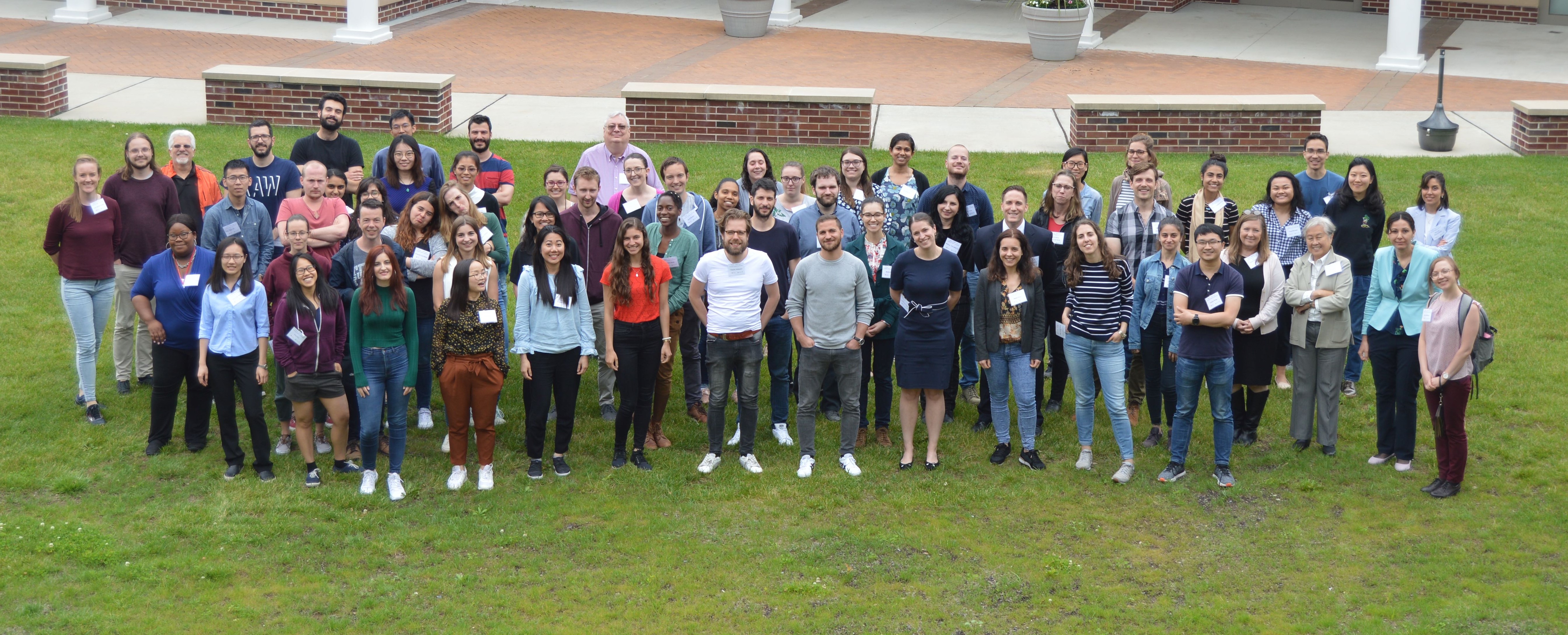
Peter Kahn Publishes Research in Protein Science
May 30, 2019
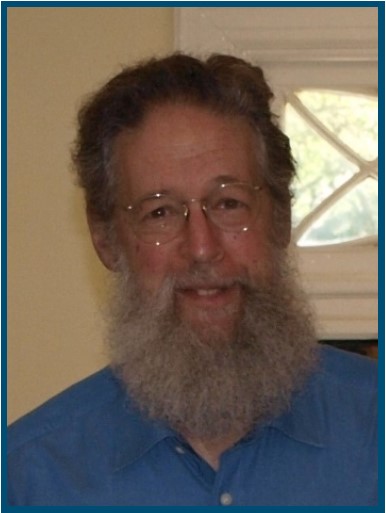
The energetics, density, mobility, and other properties of water molecules that interact with other molecules in living cells differ dramatically from those of ordinary water. When proteins, which are synthesized as amino acid chains, fold up to compact, biochemically active structures, and when enzymes bind the molecules on which they act during metabolism, hydrating water is expelled from the interacting surfaces. Its changes in density, detected by volume changes, give insight into fundamental life processes.
Read the article at Protein Science
Jeff Boyd Receives SEBS Research Excellence Award
May 30, 2019
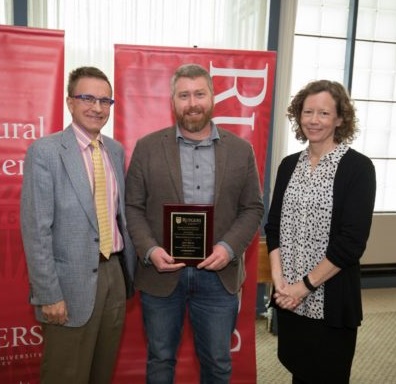
Jeff Boyd, the 2019 recipient of the SEBS Research Excellence Award, has established himself as an expert in microbial biochemistry and physiology. At Rutgers he has developed a vibrant research program at the interface between chemistry and biology, that focuses on understanding how critical cellular components of pathogenic bacteria coordinate to produce a living organism with a robust and responsive metabolism, i.e. his works decipher how they function. Currently, his research focuses on two opportunistic pathogens and leading causes of nosocomial infections: the Gram-positive bacterium, Staphylococcus aureus and the Gram-negative bacterium, Salmonella enterica. In addition, he is using Bacillus subtilis as a model. He is interested in how they process intracellular metals: how metals kill microorganisms, how microorganisms detoxify them, and how microorganisms use them for efficient metabolism. Jeff's scholarship takes advantage of his expertise in biochemistry, physiology, and molecular genetics and is providing seminal contributions to our understanding of how bacteria use metals in metabolism and how they synthesize metal cofactors, processes that are essential for life on Earth. His scholarship addresses key questions relevant to medicine, microbial pathogenesis, and biotechnology and has attracted international attention. Boyd's work is supported by the Johnson and Johnson Foundation, the Cystic Fibrosis Foundation and two major grants from the National Institute of Allergy and Infectious Diseases (NIH) and the National Science Foundation. His scholarship is recognized by a prestigious NSF Career Award in support of early-career faculty who have the potential to serve as academic role models in research and education and to lead advances in the mission of their department or organization. Indeed, he is indeed a rising star in the field of microbial biochemistry.
See all Excellence Award recipients at the SEBS/NJAES Newsroom
Peter Kahn Receives SEBS Barbara Munson Goff Teacher of the Year Award
May 30, 2019
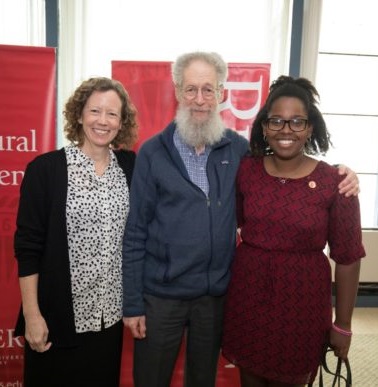
Peter Kahn, professor in the Department of Biochemistry and Microbiology, has been a member of the faculty since 1976. Among the many honors he's received in his long Rutgers career is the 2018 Clement A. Price Human Dignity Award for his "distinguished leadership for over 40 years advancing social responsibility and forging intercultural collaborations, including the global Bosnian Student Project." He's served as the local coordinator for the Bosnian Student Project, a volunteer relief effort that placed students—whose education had been disrupted by the wars in the former Yugoslavia—in high schools and colleges throughout the U.S., including placing 17 students here at Rutgers. The university provided tuition scholarships while Professor Kahn, with help from colleagues, raised funds to cover all other expenses, plus found host families. For his extraordinary humanity, Kahn has won the admiration of his peers and the Rutgers community, and the gratitude of many young scholars from that region. He's taught thousands of students over the course of the past four decades and is deeply humbled to receive this award.
See all Excellence Award recipients at the SEBS/NJAES Newsroom
Donato Giovannelli and Costa Vetriani Publish Paper on Carbon Sequestration in Subduction Zones
May 2, 2019
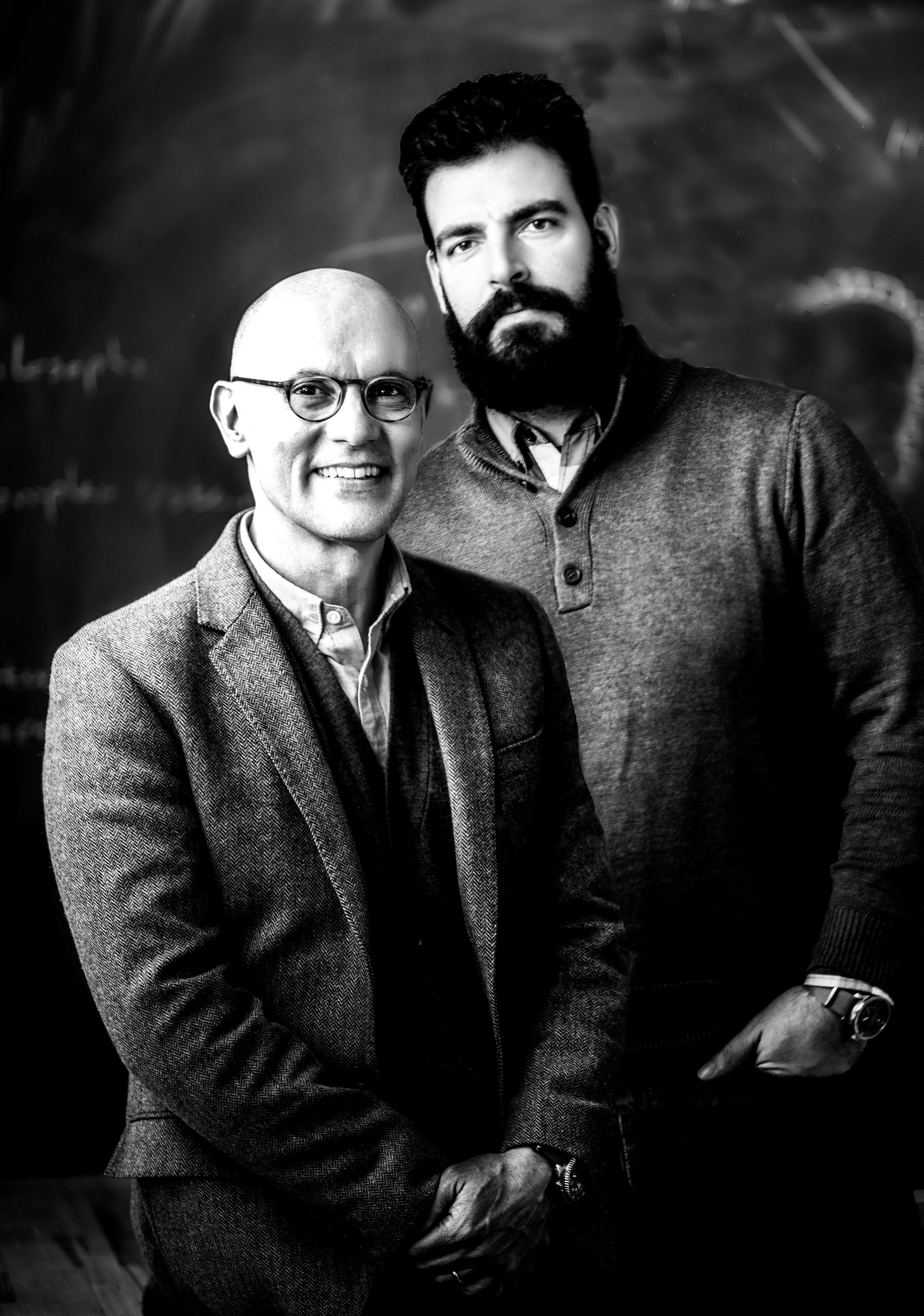
Donato Giovannelli and Costantino Vetriani are co-authors of a multi-institution paper published last week in Nature. This paper reports how carbon sequestration in the forearc regions of subduction zones reduces CO2 transfer to the mantle and, eventually, its release from backarc volcanoes, with potentially relevant effects on the discharge of greenhouse gas into the atmosphere. Subsurface chemosynthetic microorganisms likely play an important role in CO2 sequestration in the forearc region, as they incorporate CO2 in their biomass and possibly participate in calcite deposition. This paper shows how plate tectonics and subsurface microbiology work in concert and affect the carbon budget on our planet.

Donato Giovannelli, now a faculty member at the University of Naples, Italy, led the Rutgers effort. Francesco Smedile (a former post-doc in Costa's lab, now at the Italian National Research Council) and Sushmita Patwardhan (a recent PhD graduate in the oceanography program from Costa's lab, now at the Institute for Systems Biology in Seattle) also co-authored the paper.
Read the press release at Rutgers Today
Read the paper in Nature
Keith Cooper Publishes Study on Microplastics in NJ Rivers
March 26, 2019
SEBS-NJAES Newsroom
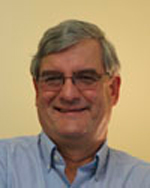
Keith Cooper, study co-author and professor in the Department of Biochemistry and Microbiology, showed that microplastics led to abnormal growth and heart defects in larval zebrafish during lab testing. It's not known whether the plastic particles themselves or the chemicals in them were responsible.
The researchers, who sampled 15 locations in the Raritan River and 10 locations in the Passaic River, found densities of about 28,000 to more than 3 million plastic particles per square kilometer. That does not include the tiniest pieces too small for the nets to capture. The most frequently recovered microplastics (38 percent) were fragments from larger plastic items, followed by foam from polystyrene, fibers and filaments, film from broken-down bags and wrappers, and small pellets. Most of the collected microplastics (71 percent) were 1 to 4.5-plus millimeters long, smaller than a grain of rice.
The study found that Passaic River densities were 10 times greater than in the Raritan River, which may be due to the greater population density in the highly urbanized Passaic River watershed. Sources of microplastics may include industrial, municipal or stormwater outfalls discharging into the rivers or their tributaries, [Center for Urban Environmental Sustainability co-director Beth] Ravit said.
"The environmental ramifications, such as how microplastics might move through food chains and how associated compounds might accumulate in organisms, are not yet known," she said. "But scientists are finding microplastics in finfish and shellfish."
Study co-authors at Rutgers included Gina Moreno, an environmental sciences graduate student in the School of Graduate Studies; Brian Buckley, executive director of laboratories at the Environmental and Occupational Health Sciences Institute; Dayvonn Jones in the Environmental Sciences Undergraduate Program; and former undergraduates Daniel Baron and Amy Hsieh.
Read the full article at the SEBS/NJAES Newsroom
Read the research article at the AIMS Environmental Science
Keith Cooper Chairs NJ Drinking Water Quality Institute
Per- and Polyfluoroalkyl Substances (PFAS) Pose a Serious Health Threat to Humans
February 26, 2019

Dr. Keith Cooper has been serving as the Chairperson for the NJ Drinking Water Quality Institute (NJDWQI) and a member of the Health Effects subcommittee while developing drinking water Maximum Concentration Levels (MCLs) for PFNA, PFOS and PFOA. For more information, please visit the NJDWQI website.

These compounds have been in commercial use since the 1950s and have made their way into drinking water supplies and wildlife around the country and in New Jersey. The fluorine-carbon bonds make these compounds highly resistant to breakdown and in the NHANES studies a number of these compounds have been found in blood. Both epidemiology studies and traditional toxicology studies have revealed many adverse health effects associated with several of the PFAS compounds. These effects range from developmental effects, altered cholesterol homeostasis, decreased vaccine efficacy and cancer. State actions have resulted in promulgation of MCLs for drinking water and fish advisories. Treatment options, activated carbon, RO and others due exist to remove multiple PFASs to levels at or below the proposed MCLs. Recent actions proposed by the USEPA to further study these compounds and delay a federal MCL promulgation has resulted in the states having to initiate and adopt their own MCLs.
Watch the news report at NJTV Online.
Jeff Boyd Publishes Staph Bacteria Gene Discovery
Rutgers Today
February 11, 2019
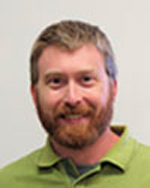
A Rutgers-led team has discovered two genes that make some strains of harmful Staphyloccocus bacteria resistant to treatment by copper, a potent and frequently used antibacterial agent.
The discovery shows that Staphyloccocus aureus can acquire additional genes that promote infections and antibacterial resistance and may open new paths for the development of antibacterial drugs, according to a study in the Journal of Biological Chemistry.
Researchers at Rutgers University–New Brunswick found the two genes in some strains of S. aureus bacteria. The genes protect the germs from copper, which is increasingly used in the global fight against severe infections.
The Staphylococcus aureus bacterium—a leading cause of serious and life-threatening infections in the United States – is highly resistant to antibiotics. Some strains of S. aureus have newly acquired genes embedded in their genome in pieces of DNA called transposons. DNA can be transferred from one organism to another, and transposons help the acquired DNA rapidly become a permanent part of the recipient's chromosome.
Transposons aid in the spread of genes that can give rise to bacteria that are resistant to antibiotics and more likely to cause disease. The newly discovered genes are encoded within a transposon.
This process likely contributed to the recent North American epidemic of staph infections, according to Jeffrey M. Boyd, study senior author and associate professor in the Department of Biochemistry and Microbiology in Rutgers' School of Environmental and Biological Sciences...
...The study was conducted mainly by Rutgers students Zuelay Rosario-Cruz, Nourhan Daigham and Hassan Al-Tameemi, along with University at Buffalo (UB) staff scientist Alexander Eletsky. Rutgers Professor Peter Kahn and staff scientist G.V.T. Swapna; UB Distinguished Professor Thomas Szyperski also contributed.
Read the full article at Rutgers Today
Also featured at:
Debashish Bhattacharya Publishes Research on Sea Lettuce
By Debashish Bhattacharya in National Fisherman
January 30, 2019

Olivier De Clerck at Ghent University in Belgium led this international study, and doctoral student Fatima Foflonker and I coauthored it. The outcome was exciting and opened up new avenues in sea lettuce research.
We found that the genome is comprised of about 98.5 million bases (i.e., A, C, G, T; ours is 3 billion bases) and contains 12,994 protein coding genes. Despite being multicellular, the genome did not show the typical footprints of gene family expansion associated with this increase in complexity, suggesting Ulva has made the transition in a novel way that needs to be investigated.
Ulva is fascinating because it relies on bacterial help to gain its typical blade-like form and cannot develop normally in a bacterium-free axenic culture. This observation led the research team to search for instances of bacterial gene transfer to the Ulva genome that may contribute to its biology. It is now well understood that, like the human gut microbiome, many other species also need microbes to grow and develop normally. This bioinformatic search turned up only 13 strong candidates of bacterial gene transfer, but most were expanded by gene duplication after their introduction, suggesting they play key roles in sea lettuce biology. An exceptional case is haem peroxidase, an enzyme that occurs in 36 copies and is involved in scavenging hydrogen peroxide that can result from high-light stress. The enzyme also plays a role in cell wall modification. The intertidal zone is bathed in full sunlight at low tide; therefore, the haem peroxidase gene family derived from a bacterial gene may help Ulva survive this hostile environment. The researchers also described the sulfur metabolic pathways in Ulva and the role of this seaweed in the global sulfur cycle.
Read the full article at National Fisherman
Gloria Dominguez Bello International Research Featured by SEBS/NJAES Newsroom
SEBS/NJAES Newsroom
January 23, 2019

How do modern lifestyle practices—from the way we eat to the way we treat diseases—impact the human microbiome? That's the question leading the research interests of Maria Gloria Dominguez-Bello, whose most recent work centers on how the microbiomes of babies born vaginally can differ from those delivered via cesarean section. "Babies born via C-section bypass the birth canal, and therefore miss their first exposure to the microbes there," she explains. "This research attempts to restore this exposure and measure the effect on the microbiome."
So far, she has studied babies in Puerto Rico, New York, Spain, and Chile. Preliminary results show that there are indeed differences in the microbiome of C-section babies, and that a restoration method can work. "If we can understand what is driving immunity disorders—asthma, allergies, celiac, and others—and which microbes are needed at what age, we can try to restore them," Dominguez-Bello says of future translational impacts. "The real probiotics are yet to come."
View the article at the SEBS/NJAES Newsroom
Julia Van Etten Turns Microorganisms into Art, Becomes Vital Part of Genome Research
By Cynthia Medina, Rutgers Today
January 18, 2019
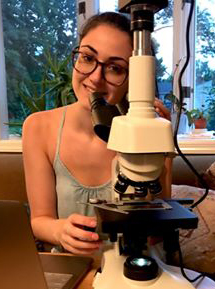
Julia Van Etten's Couch Microscopy Instagram page has attracted close to 18,000 followers in a year and a half, thanks to her breathtakingly detailed videos and photos of diatoms, algae, plankton, insect larvae and other microorganisms collected from New Jersey bodies of water. The images, captured with a $315 microscope, have garnered attention from scientists, artists and everyone in between.
A doctoral student in ecology and evolution is turning microorganisms into art, and her hobby into a powerful tool for genomics studies at Rutgers University–New Brunswick.
Julia Van Etten's Couch Microscopy Instagram page has attracted close to 18,000 followers in a year and a half, thanks to her breathtakingly detailed videos and photos of diatoms, algae, plankton, insect larvae and other microorganisms collected from New Jersey bodies of water. The images, captured with a $315 microscope, have garnered attention from scientists, artists and everyone in between.
Read the full article at Rutgers Today
Ines Rauschenbach Interviewed about Open and Affordable Textbook Program Grant
Rutgers University Libraries
January 8, 2019

Rutgers faculty use OAT Program awards to provide more individualized learning experiences for their students. For instance, award recipient Ines Rauschenbach, assistant teaching professor in the Department of Biochemistry and Microbiology at the School of Environmental and Biological Sciences, plans to replace the generic lab experiments that would be included in a traditionally published lab manual for her introduction to microbiology course with inquiry-based lessons that she designs herself and delivers to students for free via iPads.
"Inquiry-based lessons are more effective because the students are working hands-on and learning how to critically think," noted Rauschenbach. "Between buying a book for the course, buying a lab manual, buying goggles, buying a lab coat—it's a lot of money, it adds up. If we can provide these resources not only that we have prepared, but that are free, it adds value to the course and shows that we care."


